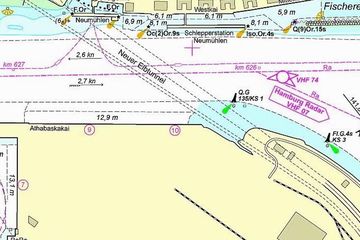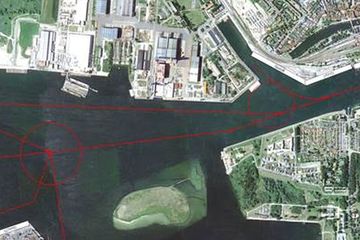Mastering Marine Traffic
Vessel traffic in ports are inherently distinctive due to the dynamic interplay of numerous factors, creating a complex and challenging operational environment. What sets port navigation apart is the intricate dance of massive vessels amidst constrained spaces, necessitating a meticulous orchestration of movements.
The special nature of vessel traffic in ports lies in the ability to navigate through a convergence of spatial, operational, regulatory, and environmental challenges, demanding a high level of expertise and precision in the planning and execution of maritime activities.
Simulation plays a pivotal role in overcoming the inherent difficulties associated with vessel movements in ports.
Carsten Eckert
Your contact for simulation-related questions.
Read the blog article
Reducing Vessel waiting times to support Port Service Quality
CHARACTERISITCS
What Is Special About Vessel Traffic In Ports?
Several factors contribute to the uniqueness of vessel traffic in ports:
Spatial Constraints: Ports are often characterized by confined spaces, narrow channels, and limited maneuvering room. Vessels, ranging from large container ships to smaller cargo vessels, must navigate through these constrained areas to ensure safety and avoid collisions.
Diverse Vessel Types: Ports cater to a wide variety of vessels, each with unique characteristics and handling requirements. The diverse mix of vessel types demands specialized navigation strategies.
Infrastructure Complexity: The layout of port infrastructure, including terminals, docks, and navigation channels, adds another layer of complexity.
Regulatory Compliance: Ports adhere to certain traffic rules and regulations to ensure safety and efficiency. The impact of these regulations on smooth vessel traffic is of crucial importance for decision-makers.
Weather Dynamics: Weather conditions, such as wind, tides, and currents, significantly impact vessel movements. Ports often experience diverse weather patterns, and navigating through these conditions requires careful planning and real-time adjustments to ensure safe operations.
Service Coordination: Vessel movements involve coordination with various port services, including tugboats, pilots, and terminal operators. Efficient communication and collaboration among these entities are essential to streamline movements and optimize overall port operations.
Time Sensitivity: Timeliness is critical in port operations, especially with the constant flow of goods and commodities. Vessel movements need to be synchronized with cargo handling processes, minimizing delays and optimizing the overall supply chain.
SCOPE OF MARINE TRAFFIC SIMULATION
Gateway to Precision, Efficiency and Strategic Foresight in Port Management
HPC marine traffic simulation serves as a crucial tool for overcoming the complexities associated with vessel movements in ports.
- Explicit Modelling of All Vessel Movements: Every vessel, every movement – our simulations leave no detail untouched. We explicitly model every aspect of vessel traffic, considering the intricate dance of ships within the port environment. This level of granularity empowers our clients with a profound understanding of traffic patterns and operational bottlenecks.
- Scaling Port Layout: Our simulations transcend the mere depiction of vessels in motion; we scale the entire port layout. This includes berths, basins, and channels, providing a holistic view of the port's infrastructure. This meticulous scaling ensures a nuanced understanding of spatial dynamics, optimizing the utilization of port resources.
- Vessel Dimensions and Manoeuvring Characteristics: HPCsim factors in the dimensions and manoeuvring characteristics of all vessel types. By doing so, we provide a realistic representation of how different ships navigate through the port, offering insights into potential challenges and optimizing traffic flow.
- Port-Specific Rules and Regulations: As compliance is key, HPC's simulations take into account the unique rules and regulations of each port. This ensures that our clients can make decisions in a safe environment close to reality.
- Modelling Effects of Weather, Waves, and Tide: The maritime environment is dynamic, and so are our simulations. We model the effects of weather elements such as wind and fog, wave patterns, and tidal variations. This enables our clients to anticipate and adapt to changing conditions, ensuring operational resilience in the face of nature's unpredictability.
- Cargo Handling Times at Berth: HPCsim’s Marine Vessel Simulation delves into the specifics of port operations, including berth-specific cargo handling times. By incorporating load-specific data, we simulate turnaround times and its impact on port productivity.
- Simulating a Full Year of Vessel Traffic: HPC's simulation covers the entire year, capturing the nuances of vessel movements in all seasons. This comprehensive approach ensures that our clients gain insights into the dynamic nature of port operations throughout the year, allowing for informed decision-making and strategic planning.
At HPC, our marine traffic simulations are not just simulations; they're gateways to a new era of precision, efficiency, and strategic foresight in port management.



